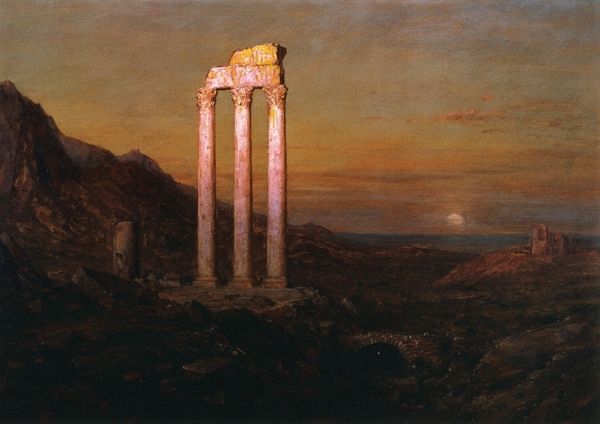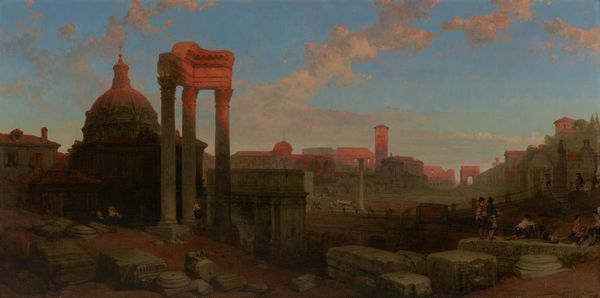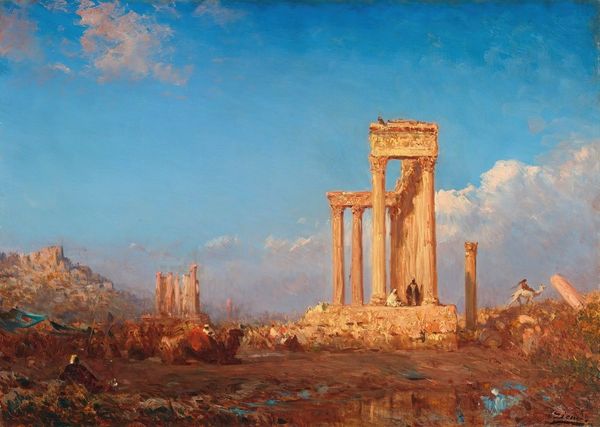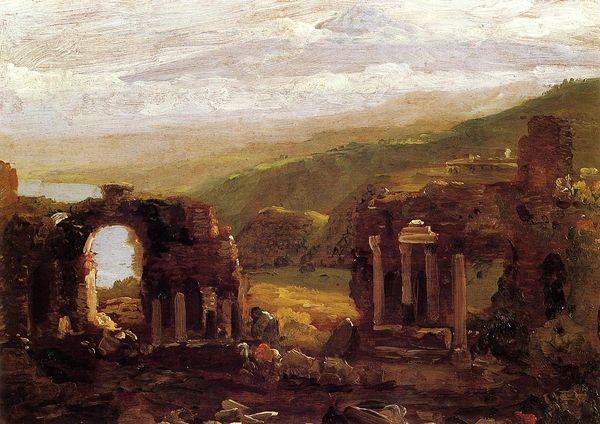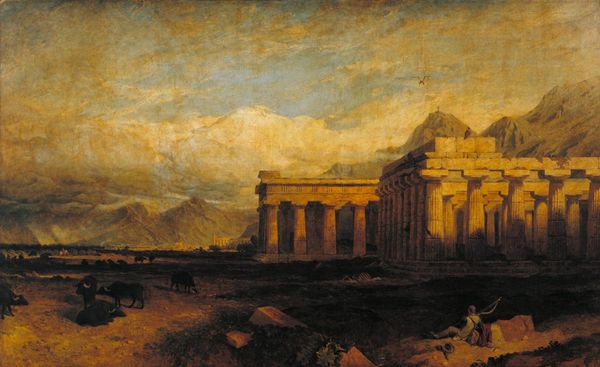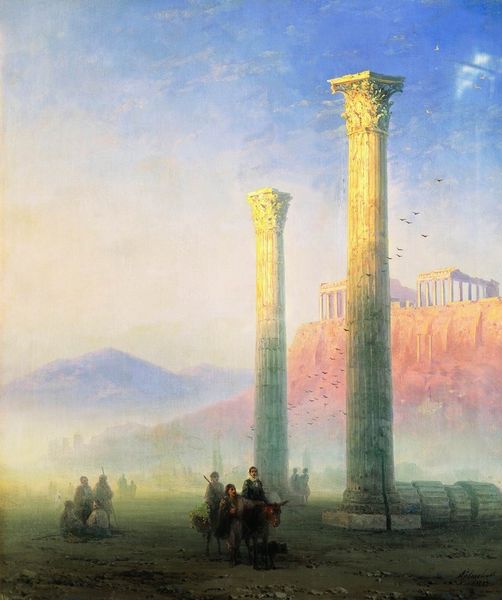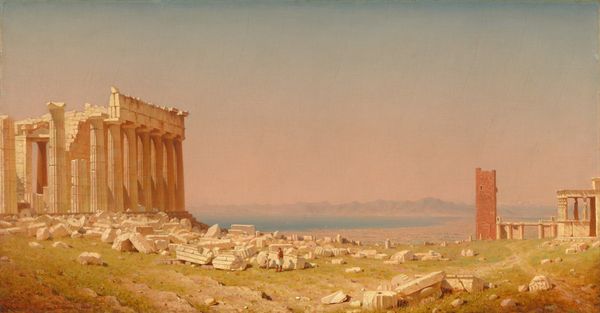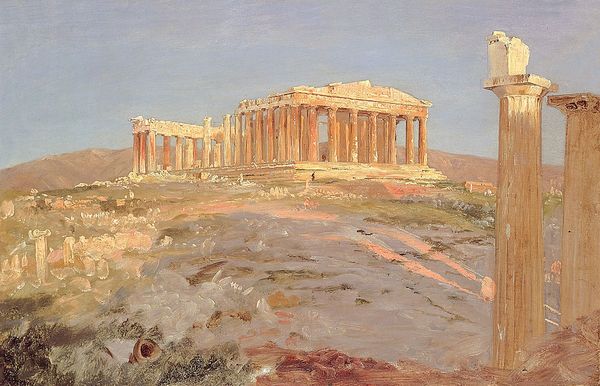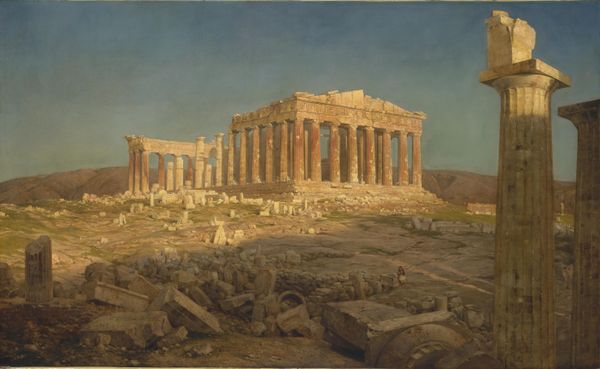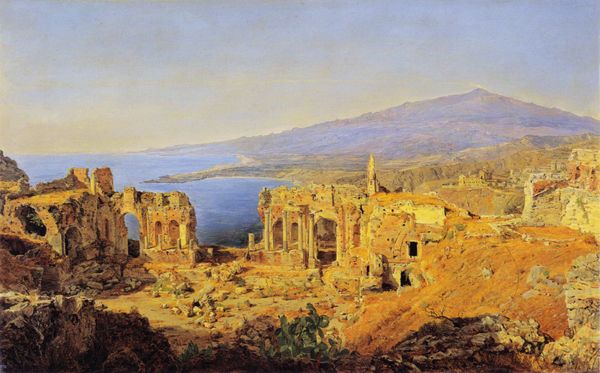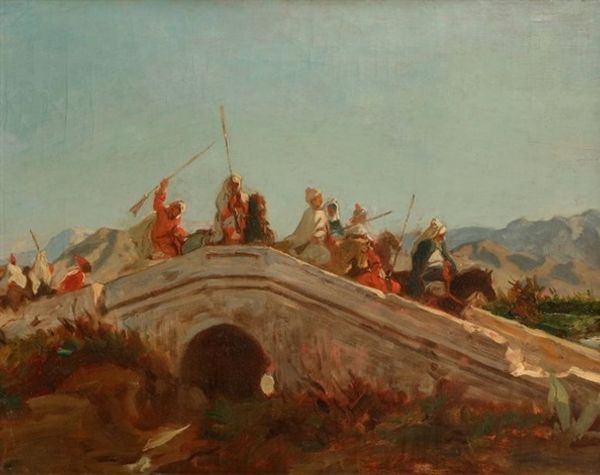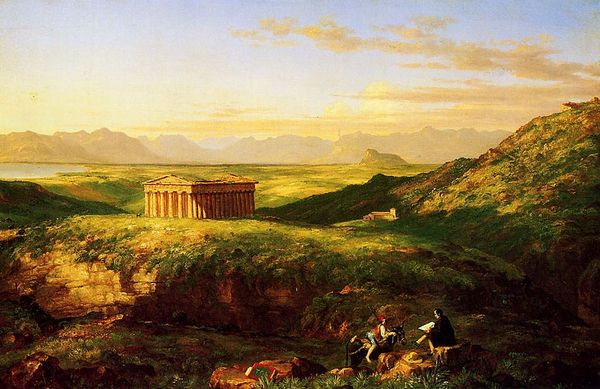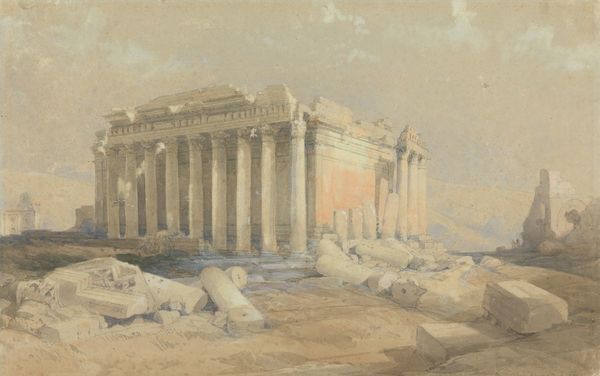
Copyright: Public Domain: Artvee
Frederic Edwin Church painted 'Classical Ruins, Syria,' capturing a landscape imbued with both historical weight and contemporary significance. Church, aligned with the Hudson River School, often depicted grandiose scenes of nature, reflecting America's then-burgeoning sense of identity and its relationship to the world. Here, the Syrian landscape speaks to a different kind of encounter, one with the vestiges of ancient civilizations. The painting resonates with the orientalist sentiments prevalent during the 19th century, where the "East" was seen through a lens of romanticism and exoticism, yet it also acknowledges the presence of ruins, standing as silent witnesses to the passage of time and power. As you observe the warm, muted tones, consider how Church invites a reflection on the transience of human achievement against the backdrop of enduring natural beauty. The ruins are not just stones; they are symbols of lost empires, stirring feelings of nostalgia and perhaps a somber recognition of the impermanence of cultural dominance.
Comments
No comments
Be the first to comment and join the conversation on the ultimate creative platform.
